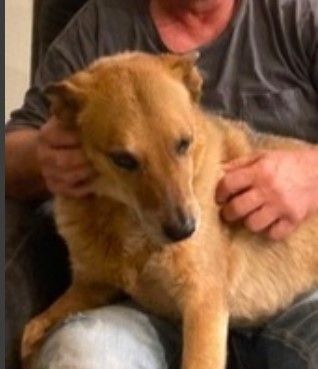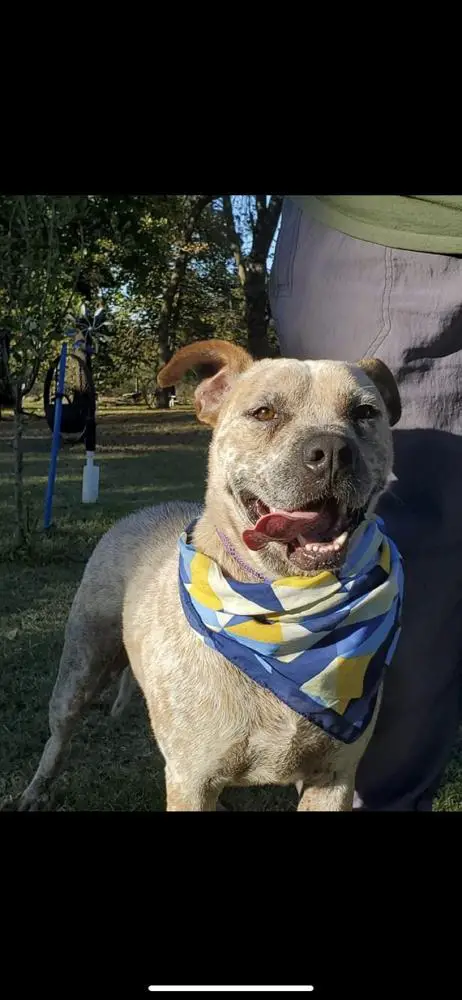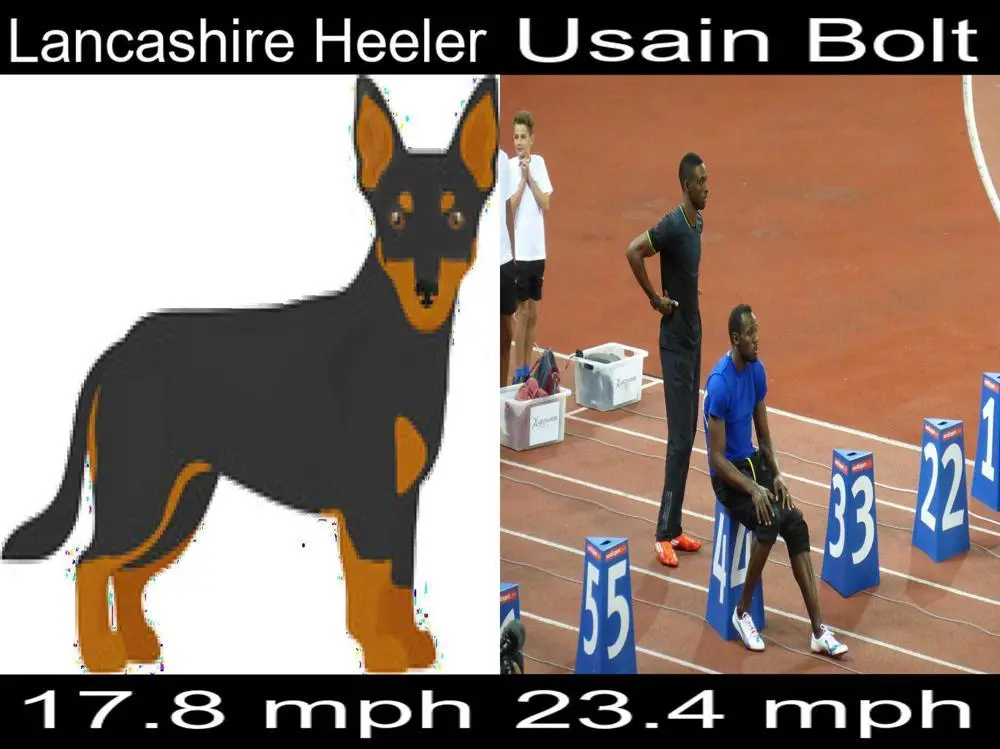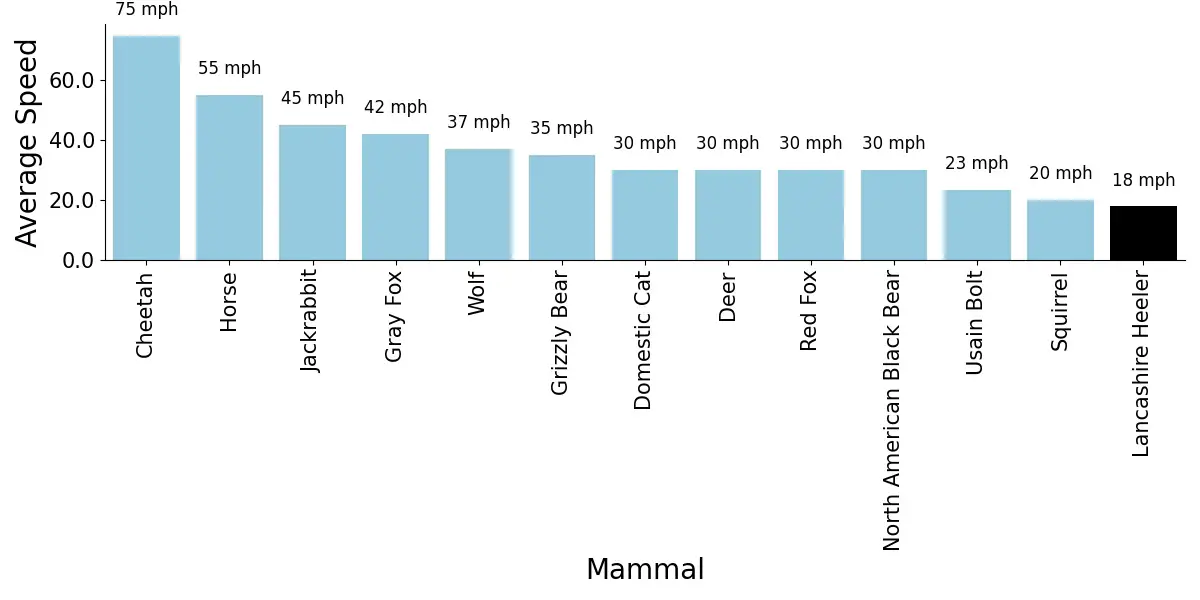Quick Links: Table of Contents
- Lancashire Heeler Breed Overview
- History of the Lancashire Heeler Breed. Where Lancashire Heelers came from
- What the Lancashire Heeler Looks Like
- Adopting or Rescuing the Lancashire Heeler
- Lancashire Heeler Litter Size
- How Fast Lancashire Heelers Can Run
- Good Names for Lancashire Heelers
- Health Problems in Lancashire Heelers and How to Prevent Them
- Dog Breeds That Are Similar to Lancashire Heelers
- Other Things to Know About Lancashire Heelers
Lancashire Heeler Breed Overview
The Lancashire Heeler is a tiny-sized dog.
The adult Lancashire Heeler stands 10 to 12 inches tall at the shoulder.
The Lancashire Heeler belongs to the Herding Dogs group.
Dogs in the Herding Dogs group, like the Lancashire Heeler, were bred for moving livestock, including sheep, cattle, and even reindeer.
Herding dogs work closely with their human shepherds, and their natural intelligence and responsiveness make them highly trainable.
Herding dogs have high levels of energy, which needs to be channeled properly to prevent destructive behavior.
Herding breeds are protective of their people and property and make excellent watchdogs. Their intelligence, agility, and activity level make them well suited to dog sports.
The fact that Lancashire Heelers belong to the Herding Dogs group is one of the reasons why Lancashire Heelers have the personality and temperament that they have.
The temperament of the Lancashire Heeler is generally described as:
- Alert
- Clever
- Friendly
- Intelligent
History of the Lancashire Heeler Breed. Where Lancashire Heelers came from
Most experts believe that the Lancashire Heeler originated in the Welsh and English regions of Great Britain as a mixture of the Corgi line and some form of Black and Tan Terrier, such as the Manchester Terrier, though there are claims that other breeds such as the Dachshund were also included in their formation.
Lancashire Heelers are a short breed that can nip at the heels of cattle while also being nimble enough to move out of the way before being kicked.
Despite a population decline, interest in this breed was revived in the 1960s, and the Lancashire Heeler Club was founded in the United Kingdom in 1978.
.
What the Lancashire Heeler Looks Like
The Lancashire Heeler has a soft undercoat that is completely covered by a layer of short, thick fur that lays flat against the body.
They have a proportional head, a tapering face, and an alert, energetic expression.
The Lancashire`s paws are small and well-padded, and the tail is carried over the back with a slight curve, though it rarely forms a full ring.
The most common color combination for these dogs is black and tan, but liver and tan is also a recognized color.
Some of these dogs may be born with tricolor, brindle, or sable colors, which are not typically recognized by Kennel Clubs.
.
Adopting or Rescuing the Lancashire Heeler
You may consider adopting a dog instead of buying a puppy. Many dogs, Lancashire Heelers included, are currently available for adoption in your local dog shelters.
These helpless but adorable dogs are waiting in dog shelters hoping that someday someone will rescue them. Dog adoption costs are lesser than the cost of a new puppy. Dog adoption costs are usually around $300 or even less.
In addition to your local dog shelter, another good place to find dogs that are available for adoption is petfinder.com.
Below is an adorable Male Lancashire Heeler named Buzz that is currently available for adoption on Petfinder.com. You can find other lovely Lancashire Heelers like Buzz on pefinder.com.

Bob is the name of another Lancashire Heeler (Male) on petfinder.com that is looking for a new forever home.

You can find more Lancashire Heelers that are available for adoption on petfinder.
Lancashire Heeler Litter Size
Researchers from the Norwegian School of Veterinary Science did a study where they counted the numbers of puppies in 2 different Lancashire Heeler birth litters.
From this study, the researchers found that the average number of puppies that Lancashire Heelers can have is 5 puppies. Also, the Lancashire Heeler can have as few as 4 puppies per litter and as many as 7 puppies per litter.
The number of puppies that the Lancashire Heeler will have depends on factors such as the age of the Lancashire Heeler, the method of pregnancy, etc.
Click here to see our calculator for predicting how many puppies your Lancashire Heeler will have and how the litter size of the Lancashire Heeler compares to the litter size of other dog breeds.
How Fast Lancashire Heelers Can Run

How fast a dog breed can run is a good measure of how athletic the dog breed is.
The American Kennel Club (AKC) regularly conducts dog running competitions. The AKC records the running speed of competing dogs in these competitions. These competitions are open to all dog breeds.
Based on our analysis of the speeds of 8 different Lancashire Heelers, the average speed of the Lancashire Heeler is 17.8 mph (28.6 kmph).
The fastest speed on AKC record that the Lancashire Heeler ran in a race is 21.12 mph (34.0 kmph) and the minimum speed on record in a race for a Lancashire Heeler is 12.17 mph (19.6 kmph).
Click here to see how the speed of the Lancashire Heeler compares to the speed of other dogs and other mammals such as cats, horses, humans, etc.

Good Names for Lancashire Heelers
Here are some really good names that are typical for the Lancashire Heeler ranked by popularity:
- Red
- Blue
- Bob
- Meeko
- Chapo
- Badger
- Buzz
- Bugsy
- Baymax
- Harvey
Health Problems in Lancashire Heelers and How to Prevent Them
Every dog breed has its own set of health problems that it tends to develop. There is nothing like a perfect dog breed.
The Lancashire Heeler is prone to certain genetic health conditions. The Orthopedic Foundation for Animals (OFA) is an organization that keeps track of genetic health problems in dog breeds.
From the extensive records that the OFA keeps, the OFA knows what health problems each dog breed is naturally prone to develop.
Hence, the OFA recommends which health screening breeders should perform on a dog breed to make sure that the breeders won`t breed `defective` dog parents that can pass down defective genes to their puppy offspring.
If you want a Lancashire Heeler puppy that will grow up to be healthy, make sure that your Lancashire Heeler breeder screens your puppy or your puppy`s parents for the health problems that the OFA recommends for your puppy`s breed. This will increase the chances that your puppy is free from genetic defects.
The following are the health tests that Orthopedic Foundation for Animals (OFA) recommends that breeders should screen Lancashire Heelers for:
You can find out more about OFA`s recommended tests for Lancashire Heelers here.
Dog Breeds That Are Similar to Lancashire Heelers
If you have not made up your mind on which dog breed to get, you may also want to consider some other dogs similar to the Lancashire Heeler.
We crunched the numbers and found that the following dog breeds that have similar behavior and temperament as the Lancashire Heeler:
- Dalmatian (77 percent match with Lancashire Heeler). Learn more about the Dalmatian here.
- Boxerdoodle (79 percent match with Lancashire Heeler). Learn more about the Boxerdoodle here.
- Hovawart (77 percent match with Lancashire Heeler). Learn more about the Hovawart here.
- Pomchi (75 percent match with Lancashire Heeler). Learn more about the Pomchi here.
Other Things to Know About Lancashire Heelers
Here are some of the very important characteristics of the Lancashire Heeler that you need to know about the Lancashire Heeler breed:
